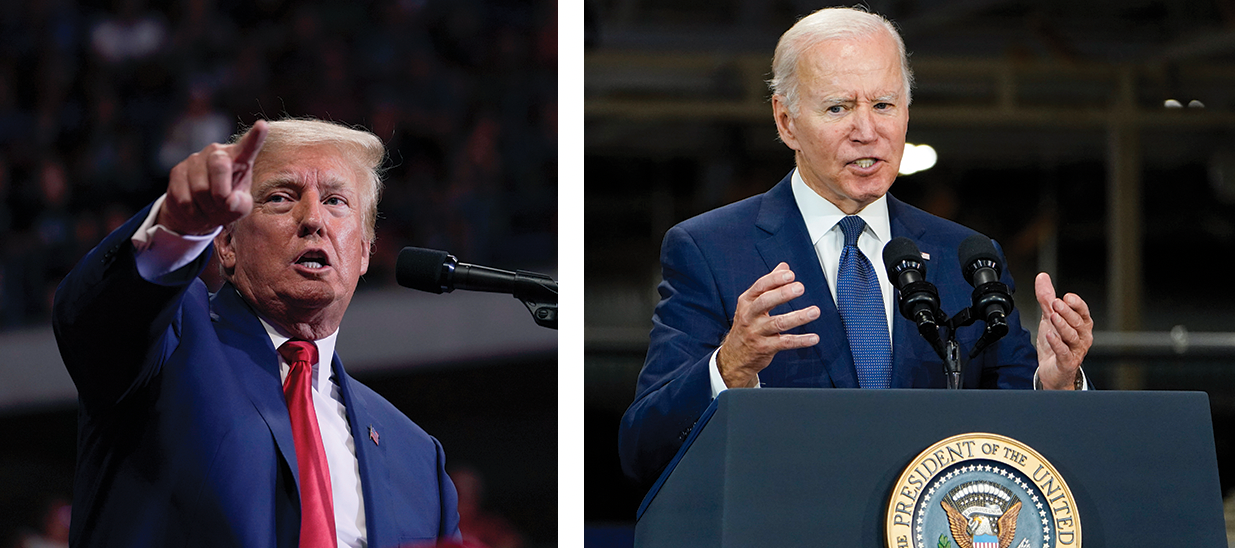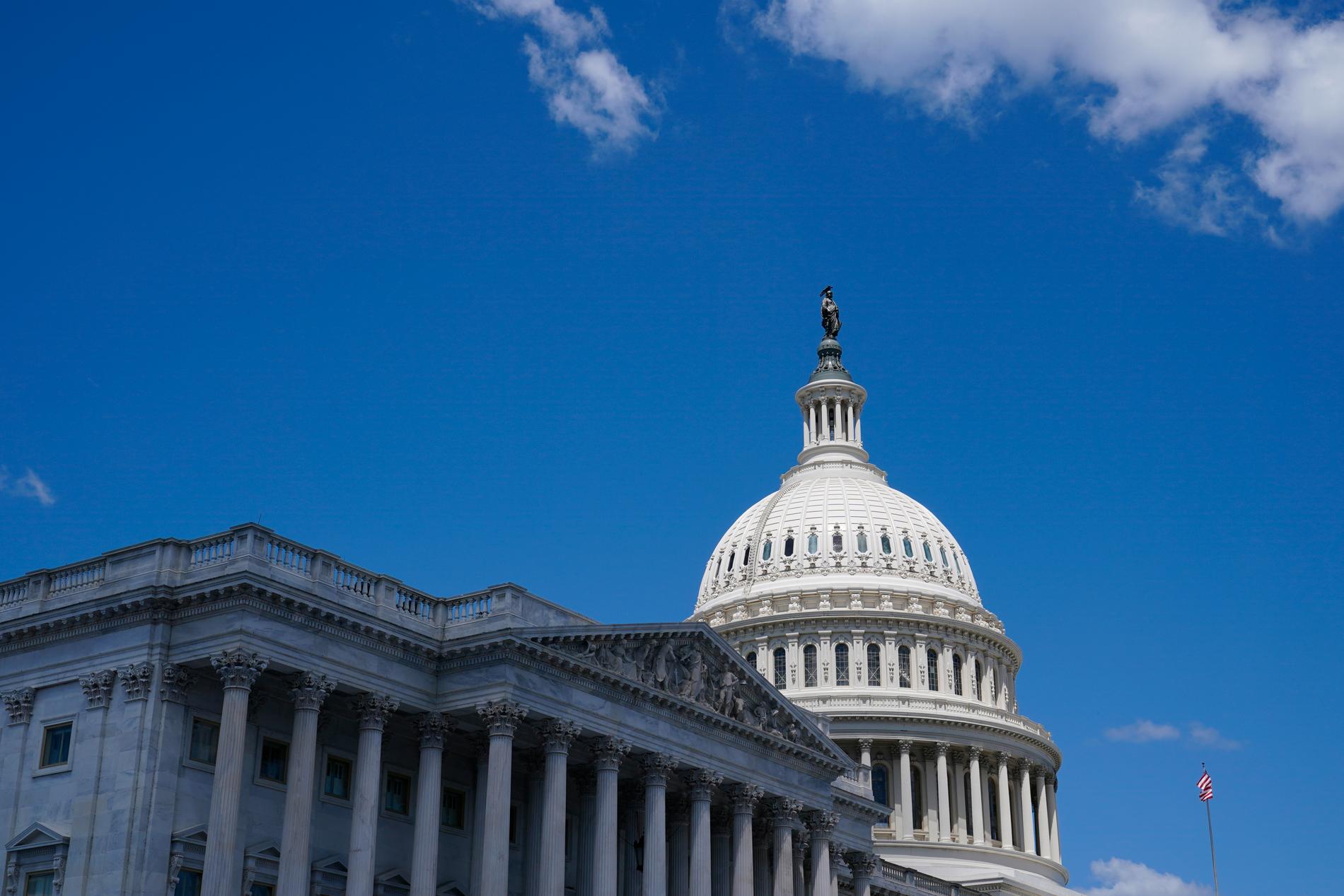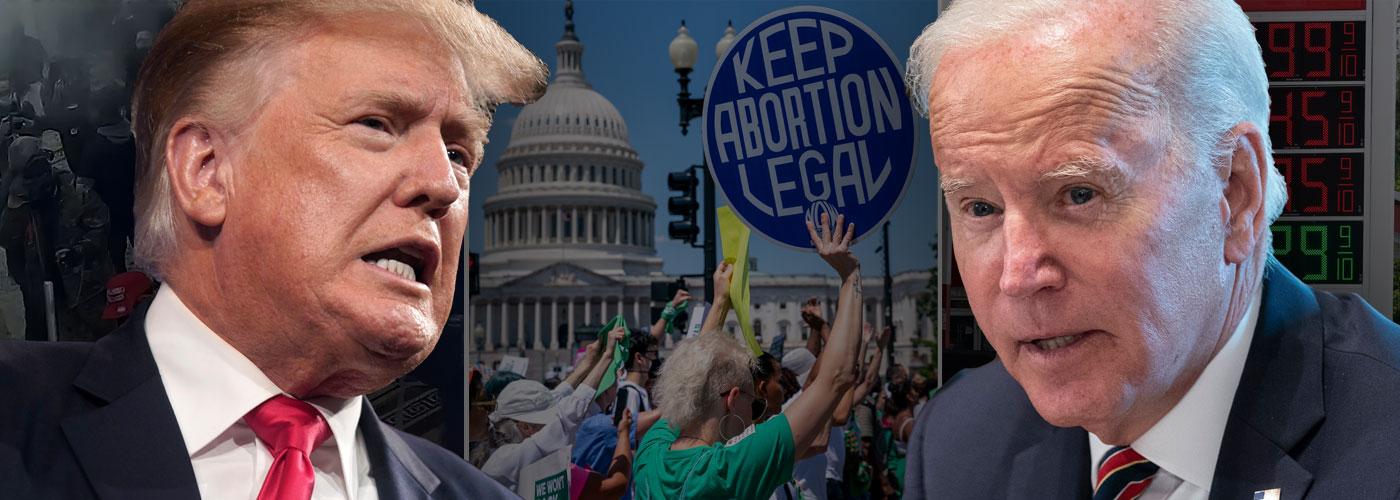Of:
Emelie Svensson
Published: Less than 20 min ago
NEWS
NEW YORK. Now the balance of power is decided in Washington DC.
The US mid-term elections determine how much policy Biden can push through in the future - and will be a test balloon for Trump ahead of 2024.
Here's everything you need to know about the fateful choice.
The United States has barely had time to catch its breath after the 2020 presidential election.
Now Americans are going to the polls again.
This time the White House is not at stake. In the so-called mid-term elections, the party distribution in the US Congress in Washington DC is decided above all.
That is: How much policy can President Joe Biden push through going forward?
In addition to electing representatives to the Senate and the House of Representatives, the election will be a litmus test for the 2024 presidential race.

Former President Donald Trump may gain several advantages during the election, but even race awaits against US President Joe Biden. Photo: Mary Altaffer / Manuel Balce Ceneta (AP)
An even race awaits
Although neither Trump nor Biden are on the ballot this year, the election will largely revolve around them and their visions for the country.
And it looks to be an even race. Last spring, experts were convinced that a republican, red tsunami would sweep the country.
Biden had historically low approval ratings, gas prices rose, inflation skyrocketed - and the president was blamed when it hurt Americans' wallets.
This summer, the game plan was redrawn somewhat.
A scrapped national abortion law injected energy into the Democratic base, a huge climate and health care reform package was hammered through, and Biden got cautiously upbeat numbers. The Democrats felt optimism.
But the wind has turned – again:
The economy and inflation continue to be by far the most important issue for voters. Everything else slides further into the rear view mirror. An advantage for Republicans.
The electoral spurt has begun.
Here are five points you should keep an eye on.

US congressional elections always take place every two years, and presidential elections take place
1. When, what, how?
The mid-term election takes place on Tuesday 8 November 2022.
US congressional elections always take place every two years, presidential elections every four.
That is why it is called a "mid-term election", because the election takes place between elections for the head of state.
The election primarily determines the distribution of power between the two parties in Congress.
The US Congress functions much like Sweden's Riksdag, but consists of two chambers: the House of Representatives and the Senate.
In the House of Representatives, all 435 seats are at stake.
These members are elected for two years.
Of the Senate's 100 seats, close to a third of the seats are on the ballot, this year 35 seats. The senators are elected for six years.
At the same time, a number of representatives are elected at the state level: governors, and to each state's legislature.
In addition, initiatives that determine the future of abortion will be on the ballot in five states: Michigan, California, Montana, Kentucky, Vermont.
2.What is Congress?
The elected, legislative assembly of the United States with its seat in the Capitol in Washington.
Congress is bifurcated:
- The upper house, the senate - where two representatives from each state are sent.
- The House of Commons, or the House of Representatives
- where the population of the regions determines how many are sent from each state.
The most populous state, California, has 53 members in the House of Representatives.
Whereas a state with a small population, such as Alaska, has a single representative.
Regardless, California and Alaska each send two senators to DC.
The House of Representatives passes federal laws, which are then considered and hammered through by the Senate.
In addition to approving laws, the Senate's duties include approving presidential nominations to the Cabinet and members of the Supreme Court.
It is much more difficult for a president to push through his policies when one or two chambers are dominated by the opposing party.
Even in the last two years, Biden has had a hard time pushing his policies through - despite the Democrats holding power in both chambers - because the margins are razor thin, and not all of his party mates agree on all issues.
3.What does the balance of power in Congress look like today?
The Democrats, led by Joe Biden, have held triple power in DC for the past 1.5 years: the White House, and both houses of Congress.
The Senate controls them by a narrow margin, the chamber is divided 50-50 since last January.
But the vice president always has the deciding vote in tied votes, and right now Democrat Kamala Harris is in the post.
The House of Representatives then? There, too, the Democrats have a slim majority. 219 members, against 211 Republicans.
Republicans need to gain a single seat to take control of the Senate, and win five more seats to take over the House of Representatives.
4.What do the chances look like?
The Republicans have several advantages. Historically, the party that won the presidency usually wins ground in subsequent congressional elections.
In addition, Biden has had rock bottom opinion numbers since last summer.
The Republicans have therefore wanted to make the mid-term elections an election about Biden, about the inflation and gas prices they believe he contributed to, and immigration. These are issues that traditionally play on the right's side of the field.
The prognosis looked bleak for congressional Democrats.
Then came the shocking news:
.
The Supreme Court repealed the national constitutionally protected abortion right in June. Instead, it is up to each state to legislate on abortions.
Something that led to a dozen states, mainly in the southern and central parts of the country, introducing a total ban.
It's an issue Republican politicians have fought over for decades.
Much points to the fact that they underestimated how many Americans want to preserve the right to abortion. Something that could lead to a setback for Republican candidates.
Surveys show that the issue has injected new energy into Democratic voters, and is engaging more centrist voters. More women are willing to vote than before.
The Republican candidates are struggling to find a common strategy on how to tackle the issue. Some tone down their anti-abortion rhetoric to win over voters.
Biden also had a couple of political victories recently. With a large health and climate package that was approved in the Senate, and decisions on canceled student debts.
Overall, Democrats hope these gains will fuel core voters, and attract undecided voters.
At the same time, the economy and inflation are the issues that dominate the election.
On these issues, voters have the greatest confidence in Republicans.
The odds show that the Republicans are believed to win the majority in the House of Representatives - but with small margins, according to the election analysis site FiveThirtyEight.
The Democrats are expected to retain the narrow power in the Senate. But it will be a rollercoaster.
5.What is at stake?
On the whole: Biden's opportunity to push through his policies.
For voters, the election will also be about voting for state politicians who are for or against abortion, when the right to abortion hangs in the balance in several parts of the country.
Former President Donald Trump can gain several advantages during the election:
The January 6 Congressional Committee, which is investigating what happened before, during and after the storming of the Capitol, is rushing to tie the knot before the end of the year.
Their report could lead to a recommendation to the Justice Department to prosecute Trump or others in his inner circle.
The committee's work will be stopped if the Republicans take over the House of Representatives, which is likely.
Additionally, a Republican-led House of Representatives has vowed to investigate Attorney General Merrick Garland and the FBI, which they say were politically motivated when they searched Trump's Florida home in August.
The mid-term elections will also be a signpost for the presidential election in 2024. Does the Trump brand attract, or is he too extreme for middle-of-the-road voters?
Trump has publicly endorsed several candidates who have embraced his rhetoric, which often repeats his lies that the 2020 election was stolen by Biden.
In addition, several election deniers are running as candidates in state races, which could affect the outcome in 2024 – and undermine the country's democracy.
One of three midterm Republicans running for key positions overseeing the state's election process — governor, secretary of state and attorney general — has, according to the AP, spread Trump's conspiracy theories about voter fraud.
Fewer than half of them, 40 percent, recognize Biden as the country's legitimate president.
Facts
The mid-term election in numbers
* On November 8, Americans go to the polls again.
* 435 seats in the House of Representatives are at stake, today the Democrats have 219 and the Republicans 211.
* 35 seats in the Senate, which has a total of 100 seats, are at stake. Today the score is 50-50 between the parties, but the vice president is the deciding vote.
* 36 governors to be appointed.
* 27 state secretaries to be appointed.
* 30 state ones

Inga kommentarer:
Skicka en kommentar